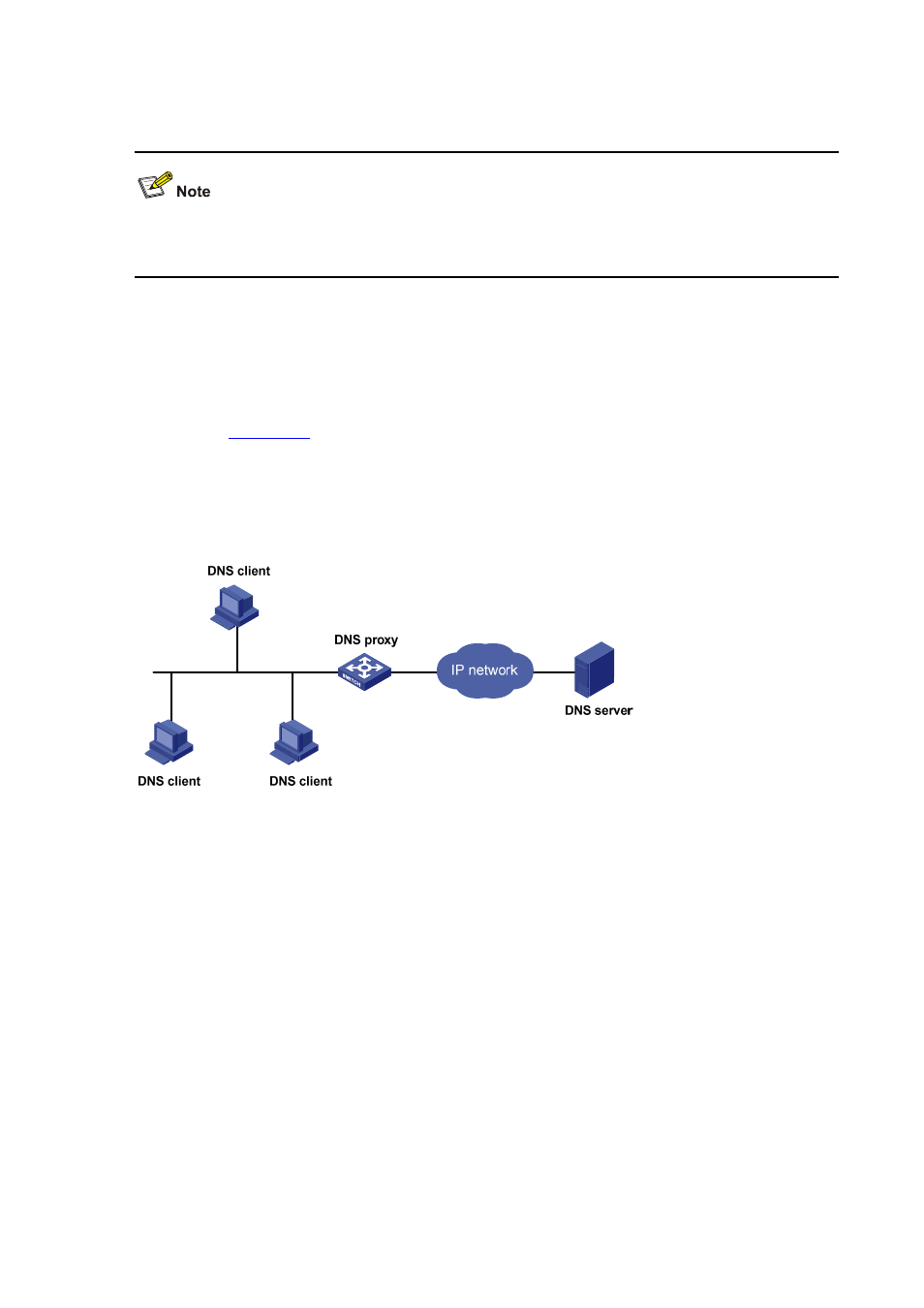Dns proxy, Introduction to dns proxy, Operation of a dns proxy – H3C Technologies H3C WX6000 Series Access Controllers User Manual
Page 513: Configuring the dns client, Configuring static domain name resolution

55-3
Currently, the device supports static and dynamic DNS services.
If an alias is configured for a domain name on the DNS server, the device can resolve the alias into the
IP address of the host.
DNS Proxy
Introduction to DNS proxy
A DNS proxy forwards DNS requests and replies between DNS clients and a DNS server.
As shown in
, a DNS client sends a DNS request to the DNS proxy, which forwards the
request to the designated DNS server, and conveys the reply from the DNS server to the client.
The DNS proxy simplifies network management. When the DNS server address is changed, you only
need to change the configuration on the DNS proxy instead of on each DNS client.
Figure 55-2
DNS proxy networking application
Operation of a DNS proxy
1) A DNS client considers the DNS proxy as the DNS server, and sends a DNS request to the DNS
proxy, that is, the destination address of the request is the IP address of the DNS proxy.
2) The DNS proxy searches the local static domain name resolution table after receiving the request.
If the requested information exists in the table, the DNS proxy returns a DNS reply to the client.
3) If the requested information does not exist in the static domain name resolution table, the DNS
proxy sends the request to the designated DNS server for domain name resolution.
4) After receiving a reply from the DNS server, the DNS proxy forwards the reply to the DNS client.
Configuring the DNS Client
Configuring Static Domain Name Resolution
Follow these steps to configure static domain name resolution: